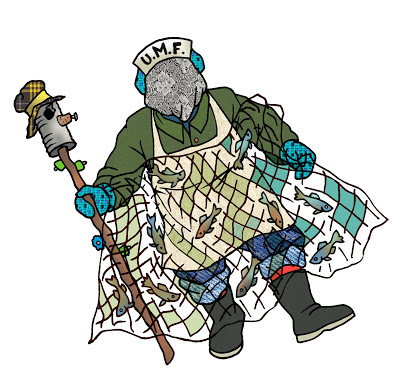Expect to see more oversized bras and long underwear than ever before! The Mummers Parade is growing each year, and the energy levels keep rising! There will be a few new surprises along the Parade route this year too!
This year marks the 150th year of the ban on mummering (which was later overturned). On Sunday, December 5th, Folklorist Joy Fraser will be discussing the alleged murder of fisherman Isaac Mercer by a group of men disguised as mummers in Bay Roberts in 1860. It is one of the most notorious episodes in Newfoundland’s history, prompting a legislative ban on mummering that remained in force for over a century. Joy’s lecture, Mummers and Murder, reveals a remarkable collection of archival discoveries that shed new light on the circumstances surrounding Mercer’s death.
Also new this year: Mummer-oke! If you’ve ever felt the slightest bit shy about singing in front of a crowd, fret no more! When you’re in disguise, who cares?! Mummer karaoke at the Georgestown pub will challenge you to sing your favorite tunes in your best mummer voice. It’s gonna be ugly, so bring an ugly stick.
If you don’t know much about mummering come out to our event “How Do You Mummer Anyway” and meet two of the most vivacious mummers out there! Direct from the Southern Shore, these two will give you the lowdown. We’ll ask all the vital questions: Which houses have the best food and drink?; What are the best ways to disguise yourself?; To knock or not to knock?; And how do you go to the bathroom in a disguise like that?
Of course we’ll also be hosting the Province’s largest dress-up party just prior to the Parade. So if you don’t have a disguise, come to the Rig Up an hour before the Parade and sort through the endless supply of ridiculous clothing on hand.
The Parade ends at The Rooms for a hard-stepping mummers dance to some high energy live music. We’ve got some tasty baked goods and enough Purity syrup to make yourself sick! So pace yourself! And, as always, you can strike your best pose at our “Mummeries Forever” Photobooth.
And remember...the Mummers Parade needs YOU!! Yes you! YOU! People love this event because they get to participate! Talk to anyone who’s been in the Parade and they’ll tell you how something funny happens to them...something odd, wondrous, magical. This is the effect of dressing in disguise. You get a bit more freedom to be foolish. We all want that, yes? And bring your friends! Bring your family! It will make your experience all the richer!
There are lots of tips for new mummers and some colourful photos on our website if you need a little guidance and inspiration.



















